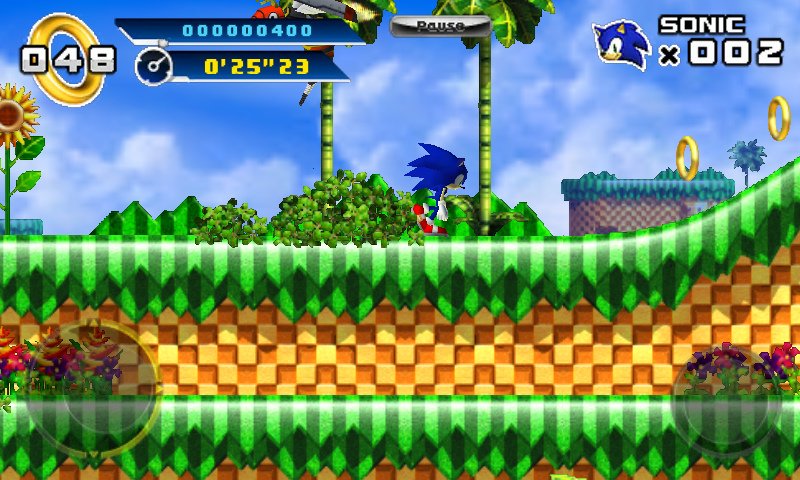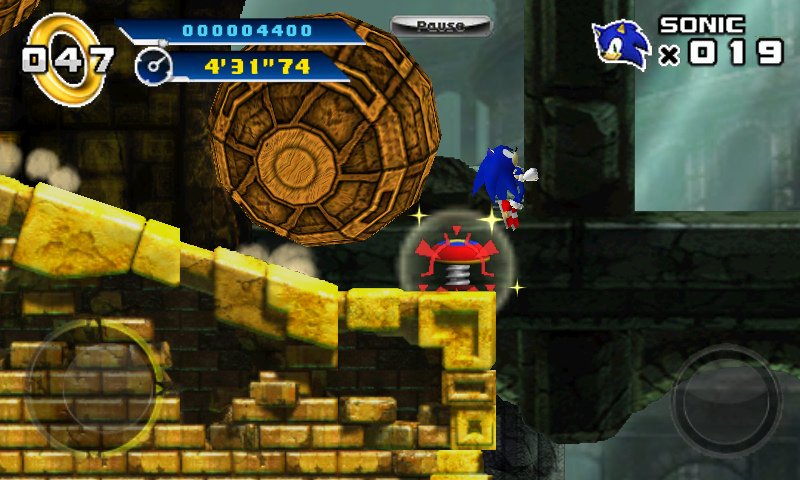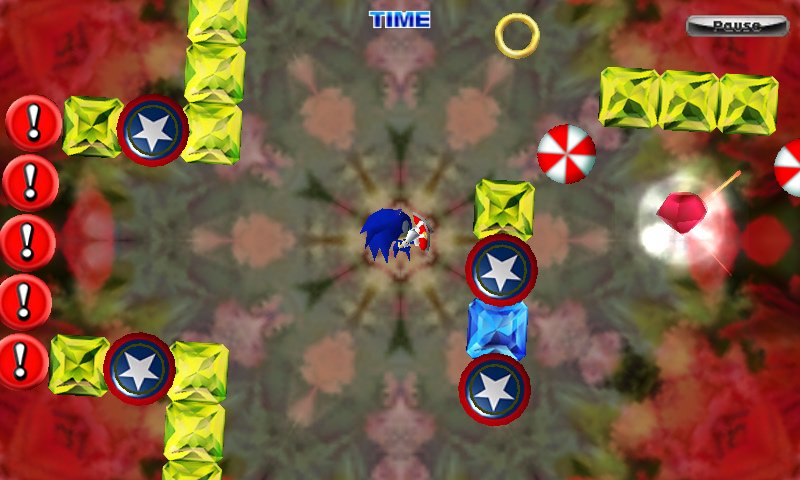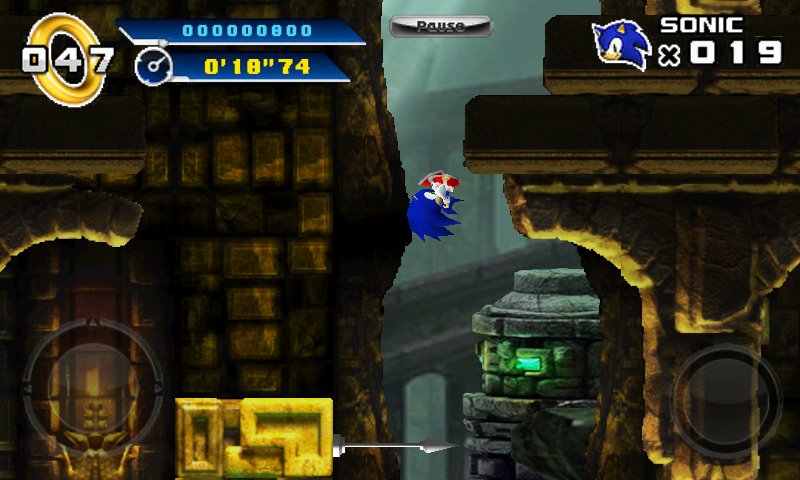Sonic the Hedgehog 4: Episode I - Review
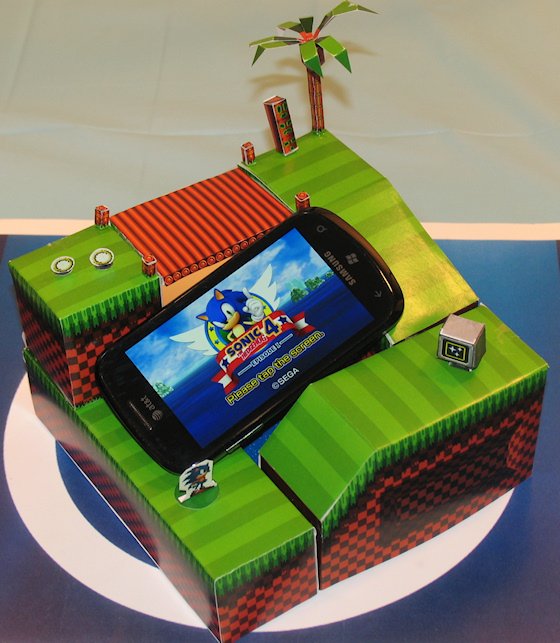
The Sonic the Hedgehog series has endured a tumultuous existence. Sonic debuted as a mascot character for the Sega Genesis and starred in several classic platformers for that console and the Sega CD. After basically shelving Sonic during the 32-bit Sega Saturn era, Sega finally decided to bring him back in a launch title for the Sega Dreamcast. Sonic Adventure received a warm reception, and yet it was the beginning of a dark time for Sonic.
You see, Adventure was the first fully 3D Sonic platformer and it introduced a host of problems that would only grow worse in follow-up titles: poor collision detection, largely on-rails game play (during the actual Sonic levels anyway), pointless town sections and side quests, terrible music, general glitchiness, numerous annoying furry pals for Sonic, and equally annoying voice work and storytelling. Each 3D Sonic sequel became progressively more heinous, culminating in 2006’s Sonic the Hedgehog, which remains the worst game I’ve ever played in my life.
Despite numerous missteps, Sonic’s popularity never fully disappeared. His fan base split into two camps though: one consists of furries and children who basically just don't know any better. The other camp remembers Sonic’s glory days and pleads for a return to the character’s roots. Sonic the Hedgehog 4: Episode I was made just for them.
Going back in time
Sonic 4 is a conscious effort by Sega to please fans of the 16-bit Sonic games. The gameplay is fixed firmly in the 2D realm. Gone are the annoying side characters (even Tails) and excesses of the newer games. Instead, the fourth Sonic game is heavily patterned after the very first Genesis title, right down to the rotating bonus levels. A few elements from Sonic 2 (the spin dash, a Casino zone) and 3 (spirals, vine swinging) show up too. It’s not entirely old-school though, as modern graphics, saving between levels, and other conveniences keep the game in-line with contemporary gamers’ expectations.
Fighting the power
Sonic’s goal is once again to rescue hoards of innocent animals that the evil Eggman (AKA Dr. Robotnik) has imprisoned within enemy robots. These mechanical foes can be defeated by spin-dashing (rolling up into a ball and taking off along the ground) or jumping into them. The new (to 2D) homing attack, in which Sonic flies straight at enemies and other targets, works great too.
A touch from a baddie means instant death unless Sonic possesses at least one ring. Littered throughout each level, rings protect Sonic from harm and give him an extra life for every 100 collected. When the blue hedgehog takes a hit, his rings scatter before disappearing moments later, giving the player a brief chance to collect a few and return safely to the fight.
In the zone(s)
Sonic 4 consists of four distinct zones with three acts and a boss zone each, plus seven special stages and a final boss zone. Let’s look at the main zones:
All the latest news, reviews, and guides for Windows and Xbox diehards.
- Splash Hill Zone: The new version of classic first level Green Hill zone is probably the fastest, most fun area of the game. Lots of loops and corkscrews keep Sonic on his toes. Act 2 bogs down a bit due to Sonic being forced to swing from vines in order to progress.
- Casino Street Zone: Sonic’s casino levels always stand out from other platformers with their flashy neon graphics and pinball-esque elements. That’s mostly true here, but Act 2 of the phone version is nothing but an annoying pinball level. Players just have to use pinball flippers to shoot Sonic into the same slot machine over and over until they reach 100,000 points. It’s a short, pointless diversion from the standard Sonic game play.
- Lost Labyrinth Zone: This temple zone contains numerous set pieces, including giant stone balls for Sonic to ride, a mine cart, and the dreaded underwater level. Act 2 on smartphones takes place entirely in a mine cart, which the player steers by rotating the level itself ala the special stages. It’s surprisingly fun and easy.
Act 3’s water level (in which Sonic needs to find pockets of air to avoid drowning) wouldn’t be so bad except for an ill-conceived puzzle at the end. Sonic gets thrust (in ball form) into a room filled with water. The only way to avoid drowning is to tilt the room itself long enough for a plug to pop out, releasing Sonic and the water. Unfortunately, tilting the room for too long will send Sonic into some spikes, so you have to move it back and forth a bit. It’s unintuitive and kills the flow of the stage. - Mad Gear Zone: The traditional mechanical death trap zone. These acts are dense with aggressive enemies like robotic crabs and mantises. Sonic will often need to climb over gears or make them spin by running on them in order to progress. Each Zone in Sonic 4 has one lame act, and here that’s Act 3: Impending Doom. A wall of death chases Sonic throughout the level, threatening to instantly squish him. That type of death is always irritating, so building a whole level around it was not a smart idea.
Boss battles
Newer Sonic games often pit Sonic against actual monsters and other giant threats, but the bosses in Sonic 4 follow the first game’s approach: each one is a different fight against Dr. Eggman and his contraptions. They’re based off of specific past encounters, though new attacks freshen things up a bit. For instance, in the first fight Eggman floats around the screen, swinging a giant ball from a pendulum. Hey, I remember that from the Green Hill Zone in Sonic 1! But now, Eggman can spin in place after taking a few hits, making the ball much harder to dodge.
The new boss fights are mostly fun but only mildly challenging, except for the Lost Labyrinth Zone and E.G.G. Station Zone bosses. In the Lost Labyrinth, Eggman attacks by making pillars come out of the wall in various patterns. Move slowly or end up in the wrong place and Sonic gets squished, killing him instantly. How irksome.
As for the E.G.G.Station Zone, the game’s final zone consists of five different Eggman encounters. The first four boss fights are recycled, though they’re shorter and easier the second time around. The pillars in Eggman’s third form still kill Sonic instantly, so that part’s always a headache to me. Eggman’s fifth and final form finds him piloting the giant Eggman robot from Sonic 2. The fight wouldn’t be so bad but the robot takes a whopping 25 or so hits to defeat, and its attacks become much harder to dodge at the halfway point. Add in an annoying siren sound that plays throughout most of the fight, and it becomes a long, frustrating affair.
Bonus round!
To reach the Special Stages in Sonic 4, gamers need to reach the end of an act with 50 or more rings and then jump through the giant ring before the level ends. Each of the seven Special Stages is a maze with a Chaos Emerald at the end. Instead of directly controlling Sonic (who is curled up into a ball), players rotate the maze to steer the blue blur around. The timer constantly ticks down as you try to reach the emerald without bumping into an exit and ending the stage.
Complete all 7 stages by collecting their Chaos Emeralds and Sonic gains the ability to transform into Super Sonic whenever he has 50+ rings. Super Sonic moves and jumps faster and is nigh-invincible, so collecting the emeralds is worth the effort. Just remember to set the Special Stage controls to swipe instead of the default tilt to make them easier.
A console game in your pocket
Developed simultaneously for consoles and smart phones, the Windows Phone version of Sonic 4 is remarkably close to the Xbox 360 game. The graphics (polygonal characters and mostly 2D backgrounds) are mostly identical except for the decreased resolution that comes with a smartphone screen. It also sounds the same, for better or worse. Sonic 4’s soundtrack consists of tunes that were rejected from Sonic & Knuckles. They sound appropriately retro, but the composition can’t hold a candle to actual classic Sonic music; Sega even left out the iconic invincibility music.
More impressively, almost all of the console version’s content founds its way into the mobile game. All but two of the original stages made the cut. The replacement of console Casino Zone Act 2 (my favorite stage) with a brief and undercooked pinball level hurts a bit. The other phone-exclusive level, Lost Labyrinth Zone Act 2, is a much better addition.
Controls
We can’t compare Sonic 4’s big screen and mobile versions without touching on the controls. Specifically, the Windows Phone game uses a virtual thumb stick and button to replicate the console controls. Touch controls can never be exactly as good for a platformer as physical controls, but that doesn’t mean they can’t be good at all. Sonic 4’s controls actually work really well due to the simplicity of the game itself. Since there’s only one stick and one action button, your thumbs shouldn’t get lost like they would in say, Asteroids Deluxe. Tilt controls are also an option, if you like dying, that is.
Achievements

Sonic 4 includes all of the Xbox 360 version’s Achievements, plus a few new ones. The new Centurion Achievement requires players to beat Mad Gear Zone with 120+ rings, which basically amounts to clearing the stage without getting hit. The returning Achievement Contender is earned by completing every level for a second time in Time Attack mode. Time Attack is a bit harder because you have to start each level from the beginning rather than midpoints if you die.
There is also one dreadfully tough Achievement: Untouchable. It’s awarded for beating all five of the final boss’s forms without taking a hit – a Herculean effort. Thankfully it’s a bit easier on Windows Phone than Xbox 360 because you can lock the screen if you make a mistake and restart from whatever boss form you were on. Even then, only hardcore players will want to go for that one.
Overall Impression
Sonic 4 may not be for everybody. Some critics seem determined to hate the game based on minor shortcomings like its physics, which aren’t quite perfect – oh noes! Occasionally bad stage design, the frustrating final boss battle, and mediocre soundtrack are far more valid complaints. But none of that ruined the game for me. Sonic 4’s bold, colorful graphics, excellent sense of speed, and numerous classical touches all help make it a worthy successor to Sonic 3.
Quality doesn’t always come cheap. Sonic 4 on Windows Phone is kind of expensive at $6.99 (just like the iPhone version), but when you consider that it’s got almost everything the console game has at less than half the price, it doesn’t seem so bad. I’m just thrilled to finally play another good Sonic game. Sega still hasn’t announced any details or a release date for Episode II, but hopefully it comes to Windows Phone as well.
- Sonic the Hedgehog 4: Episode I - Windows Phone 7 an 8 - 105 MB - $4.99 - Store Link

Paul Acevedo was formerly a Games Editor at Windows Central. A lifelong gamer, he has written about videogames for over 15 years and reviewed over 350 games for our site. Follow him on Twitter @PaulRAcevedo. Don’t hate. Appreciate!
